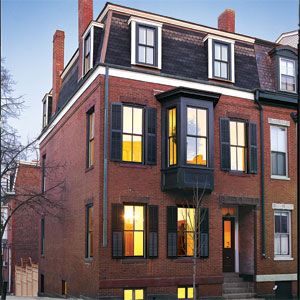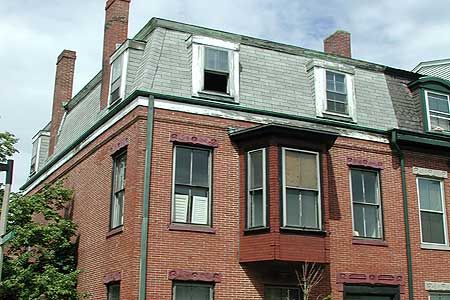
About 65 to 70 percent of a tree can be used for solid lumber, but what
about the rest? In the past the answer was simple: It was burned or
dumped in landfills. Today more than 95 percent of a harvested tree can
be put to good use thanks in great part to the increased use of
engineered wood products. Among these, medium density fiberboard, or
MDF, has enjoyed remarkable success over recent years. As the MDF
supplier for This Old House TV’s Charlestown house, I’m in a good position to tell you
about the material’s history.
The material got its start in the United States in 1966, at a plant in
upstate New York. As it became clear that making MDF offered a far
better use of residual wood than disposing of it, production soared.
Today there are some 27 plants in the US and Canada, and more than 100
worldwide. Recently the industry has expanded its use of recovered
materials to include agricultural by-products such as wheat straw and
post-consumer recycled wood.
MDF is typically made from sawdust, planer shavings and other waste that
remains after a tree is milled into lumber. The wood is then cleaned
and mechanically refined in a process that reduces it into fine, uniform
fibers. Excess moisture is removed and an adhesive resin is added to
hold the fibers together. This mix is then formed into a long, thick,
homogeneous mat, which is compressed under intense heat and pressure.
The resulting MDF panel is sanded to a fine, even smoothness, and cut to
the required width and length. Computer-controlled sensors monitor the
entire manufacturing process to measure slight variations that even the
human eye cannot detect. Finished panels are tested for uniformity,
strength and other structural soundness.
MDF is used extensively indoors in furniture, cabinets, doors, mouldings
and flooring. Like other engineered wood products, it has a
distinctively flat, dense surface that holds paint well. It doesn’t
move like wood, so its joints stay tight and paint doesn’t crack. But
the glory of MDF is its uniformity; it can be machined into every
conceivable shape to create architectural details such as balusters or
mouldings. Unlike real wood, MDF has no knots, grain or warping that
can make intricate woodworking difficult. While solid wood is better
suited to structural applications such as floor joists, MDF tends to be
cheaper than solid wood so it’s well suited to interior doors, bookcases
and kitchen cabinets.
In the Charlestown house, the homeowners chose MDF interior doors that
we custom cut to match the house’s other large doors. We made and
shipped the doors in only a few days, at a significantly lower cost
than solid wood doors. Once the doors are treated with a faux-wood
grain finish, they will have all of the benefits of MDF with the look
of solid wood.

